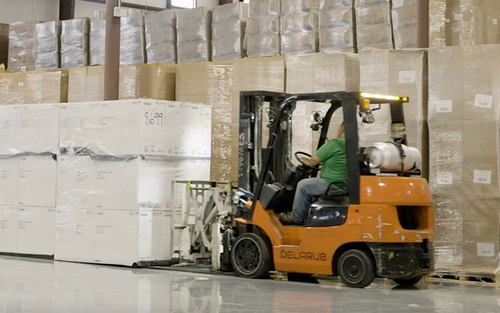How to write a warehouse resume: 5 must-have sections


By The Schneider Guy
Estimated reading time: 3 minutes
No matter where you’re at in your warehouse career, having a well-crafted resume can help you stand out in pools of other job candidates when applying for jobs.
From showcasing your experience to highlighting your skillsets, continue reading to learn how to write a warehouse resume to help you land the role you’ve been eyeing.
What should I put on my resume for a warehouse job?
1. Your name and contact information.
At the very top of your resume – oftentimes as the header – list your first and last name and contact information. Your contact information should include:
- Your phone number.
- Your email address.
- Your residential address.
Display your name in a bold font with your contact information right below it. Make sure your contact information is up to date.
2. A professional summary.
A professional summary is a brief statement at the beginning of your resume that describes the experiences and qualifications that make you a strong candidate for the role.
In two or three sentences, highlight accomplishments that are relevant to the position you’re applying for. When possible, include statistics to back up the results of your accomplishments.
Your professional summary can fall directly under your name and contact info.
3. Your skills.
Elevate your resume by showcasing the skills that make you an ideal candidate for the job.
Depending on the position you’re applying for, some warehouse skills to put on a resume could include:
- Forklift experience.
- Basic technology skills.
- Inventory management systems experience.
- OSHA safety knowledge.
Presenting your skills in a clear, bullet-point format will make this section easier to read. You can place your list of skills as the first section under your professional summary.
4. Your work experience.
Your work experience is one of the most important parts of your resume.
Start with your most recent position, and then work your way backward. Each role you list should include:
- Your job title.
- The name of the company you worked/work for.
- The dates (month and year) you were/are employed at the company.
- Your job responsibilities.
When writing out your job experiences, follow these formatting tips to make the section more effective:
- Start each bullet point with an action verb.
- Use present tense for your current job and past tense for any previous work experience.
- Put periods at the end of each bullet point.
5. Your education and certifications.
At the end of your resume – or in a separate section on the side – list your educational background and any certifications you’ve earned that are relevant to the role, such as a forklift certification.
Start with the highest level of education you’ve received and detail:
- The type of degree you received.
- The name of the educational institution.
- The years you attended school.
Next, write any relevant certifications you’ve earned and include:
- The name of the certification.
- The organization you received the certification from.
- The year you earned the certification.
What should a warehouse resume look like?
Your resume should be one page long with consistent font and formatting. The document should include headings for each section discussed above and bullet points to make it easy to read.
Warehouse associate resume example
Jane Johnson
123-456-7890 | janejohnson@yahoo.com | Chicago, IL 60607
Professional summary
I am a certified forklift operator and warehouse specialist with more than two years of experience working in warehouses. I helped streamline shipping processes at my current employer, which led to a 30% increase in on-time deliveries.
Skills
- Responsible for loading and unloading freight.
- Proficient in warehouse inventory management software.
- Experience with operating forklifts and other heavy equipment.
- Strong knowledge of safety protocols and regulations.
Experience
Warehouse specialist | XYZ Company | October 2022-Present
- Loads and unloads pallets from trailers and containers.
- Operates forklifts and other heavy machinery in compliance with company procedures and safety regulations.
- Performs product inspections and wraps pallets as needed.
- Sorts, labels and scans freight into inventory management systems.
- Assists with business delivery of products.
- Maintains a clean and safe working environment.
Warehouse associate | XYZ Company | August 2021-October 2022
- Helped load and unload pallets from trailers.
- Performed quality checks and product inspections.
- Wrapped pallets following company procedures.
- Assisted in maintaining a clean and safe working environment.
Education & certifications
- High school diploma, ABC High School, 2017-2021.
- OSHA forklift certification, National Forklift Foundation, 2022.
Be prepared for your warehouse job interview.

Schneider Guy loves the "Big Orange." He's passionate about the trucking industry and connecting people to rewarding careers within it. He's been the eyes and ears of our company since our founding in 1935, and he's excited to interact with prospective and current Schneider associates through "A Slice of Orange."



